|
|
Post by keen101 (Biolumo / Andrew B.) on Aug 16, 2018 0:59:45 GMT -5
I have small watermelons forming. I have at least two small citron melon like rhinds in the citron patch. I also have at least one light colored rhind. Since i mixed in some kholodok and another Russian storage melon and maybe navajo red seeded in too i don't know whether it means that is a domestic in the Citron patch or a strange dominant rhind pattern in a citron hybrid.
|
|
|
|
Post by keen101 (Biolumo / Andrew B.) on Aug 25, 2018 23:19:06 GMT -5
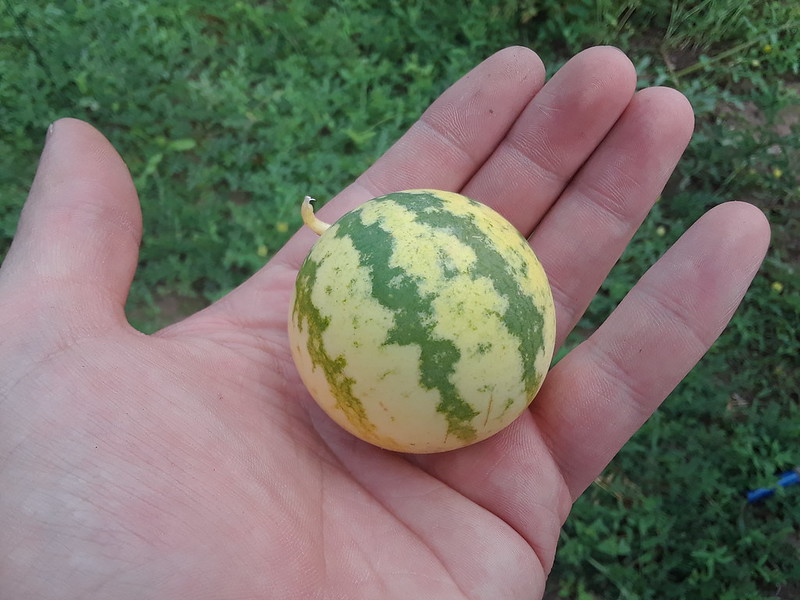 F1 fruit, watermelon x citron hybrid. F1 fruit, watermelon x citron hybrid. by Andrew Barney, on Flickr 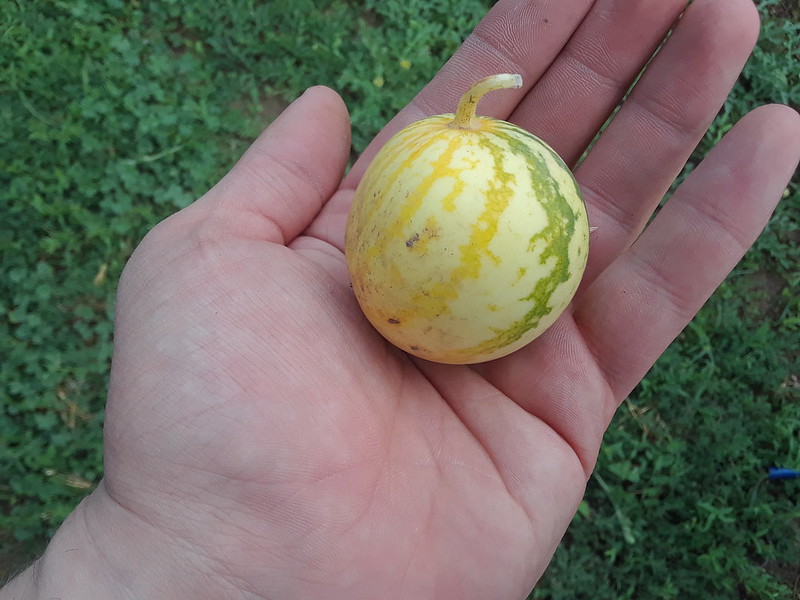 F1 fruit, watermelon x citron hybrid. F1 fruit, watermelon x citron hybrid. by Andrew Barney, on Flickr 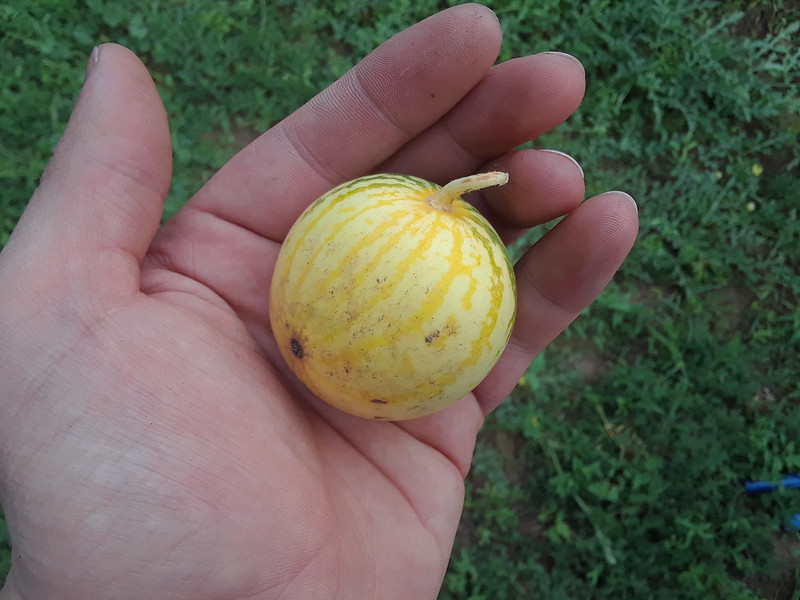 F1 fruit, watermelon x citron hybrid. F1 fruit, watermelon x citron hybrid. by Andrew Barney, on Flickr Harvested a ripe, although mini citron melon hybrid. It had domestic watermelon pattern, has the yellow-when-ripe gene, the vine also turned bright yellow, the inside was yellowish and soft, but it tasted nasty. Seeds were nice and big and black. ethin also reported getting some similar results in his garden. We will see what else we get. Got a few seeds to continue at least. |
|
|
|
Post by whwoz on Sept 10, 2018 0:42:38 GMT -5
I have not had a lot of time to go reading through the threads on this site, but reading this one from start made me think of something that happened three or four (five?) years ago. We had been buying pieces of a "seedless" watermelon and home and throwing the leftovers out into the paddock, which at this point of time had no animals in it. Several plants grew and were moved into a veggie garden where several fruits were formed. When cut these looked just like red-seeded citron (or Jam melons as we know them), which I was not interested in at the time and were thrown. Maybe I need to revisit this and check on Ozgrow where I had a thread about them.
Just checked Ozgrow, not much more info there than I recall. Must revisit this in light of this thread.
|
|
|
|
Post by ferdzy on Sept 10, 2018 7:57:38 GMT -5
The yellow-when-ripe gene does turn the whole plant yellow. I'm finally having some success this year with my y-w-r project, but I've noticed this from the beginning. Consequently you need to get those plants off to a good start, because what forms in the first few weeks is what you are getting. Here in Ontario our season is short enough that tends to be the case anyway, so I don't worry about it.
I do have some melons that look very similar - round, similar stripes, turns yellow; but mine are much bigger. One of the grandparents was Crimson Sweet, which contains citron in its ancestry.
|
|
|
|
Post by keen101 (Biolumo / Andrew B.) on Sept 10, 2018 13:21:10 GMT -5
Cool. Sounds interesting. I grew some citron melons in my first years of starting the watermelon landrace project, and i too got some white fleshed bland watermelons. It never occurred to me at the time they could have crossed with the citron melons, and thus got thrown away as i just thought they were either bland white watermelons or they were not ripe enough.
What confuses me about these having the yellowing gene is that (yo) is supposed to be recessive, but these plants are supposed to be F1 plants. Hmmm... odd.
|
|
|
|
Post by ferdzy on Sept 11, 2018 8:16:06 GMT -5
What confuses me about these having the yellowing gene is that (yo) is supposed to be recessive, but these plants are supposed to be F1 plants. Hmmm... odd. Who knows where the yellowing gene comes from? But it wouldn't surprise me if it was floating around in citron. I also see some partial expression of it sometimes, when it is presumably only supplied by one parent. |
|
|
|
Post by keen101 (Biolumo / Andrew B.) on Sept 11, 2018 9:22:41 GMT -5
What confuses me about these having the yellowing gene is that (yo) is supposed to be recessive, but these plants are supposed to be F1 plants. Hmmm... odd. Who knows where the yellowing gene comes from? But it wouldn't surprise me if it was floating around in citron. I also see some partial expression of it sometimes, when it is presumably only supplied by one parent. Well it is possible citron melons have a dominant version, or other modifier genes that express it differently than domestic. It is also possible that these are actually F2, but unlikely. It is also possible that they crossed with a yellow rhind domestic watermelon or Landrace melons who had that recessive trait hidden. No idea, but cool trait none the less! |
|
|
|
Post by keen101 (Biolumo / Andrew B.) on Sept 30, 2018 0:35:39 GMT -5
Here are some photos of my watermelon and [citron melon x domestic watermelon] hybrids for this year [2018]. More updates to come soon. First a photo of a large citron hybrid looking melon i was watching for awhile in the top citron patch. Then all of a sudden out of nowhere this light skinned watermelon grew and got bigger than the one right next to it. It has a light green almost white domestic looking pattern to it. I think some domestic watermelons like Kholodok and others (like maybe navajo red-seeded) were mixed in, so im not sure if the light skin is a domestic watermelon or not yet. Upper Citron patch. some citron looking rinds. Upper Citron patch. an unusual domestic pattern. light green with light green faint stripes. Upper Citron patch. Another light green large one like the first photo. Upper Citron patch. medium citron-ish pattern. kholodok? Upper Citron patch. --- In the domestic patch. 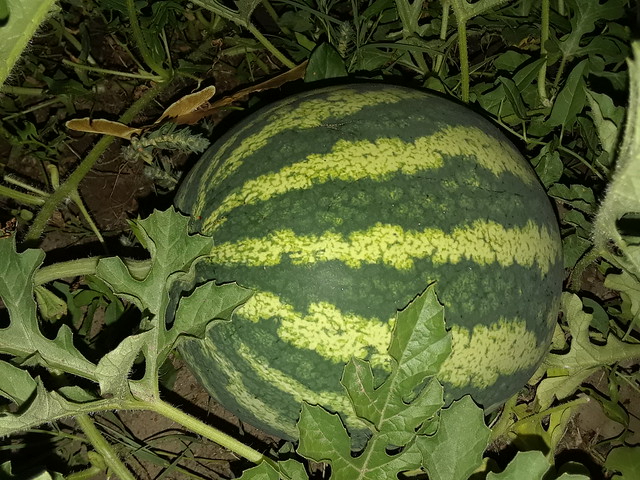 20180926_192138 20180926_192138 by Andrew Barney, on Flickr A clearly citron melon with distinctive "cloverleaf-ish cauliflower stippling pattern found in citron melons with the distinctive slight yellowing on top. In the domestic patch. Not sure how it got there. Hybrid? Full citron melon? 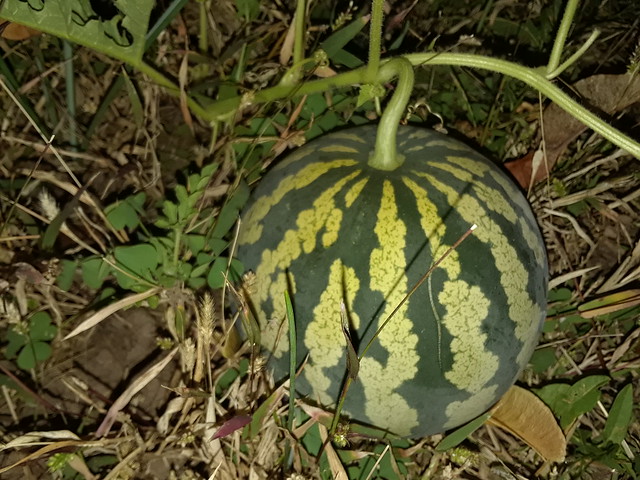 20180926_192154 20180926_192154 by Andrew Barney, on Flickr In the domestic patch. 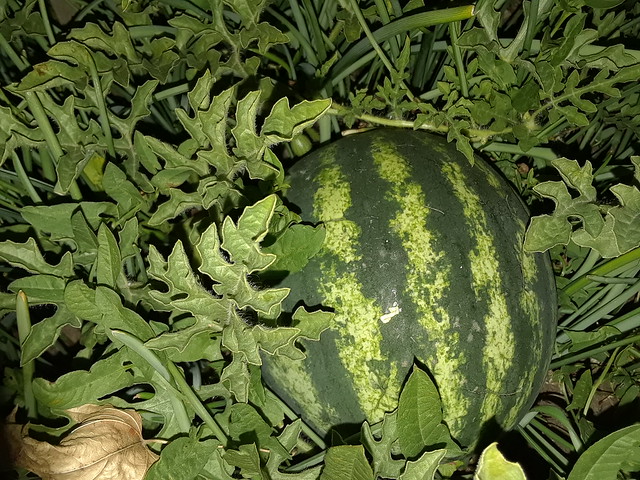 20180926_192301 20180926_192301 by Andrew Barney, on Flickr Either domestic patch or lower citron patch. Can't remember.  20180926_192306 20180926_192306 by Andrew Barney, on Flickr In the lower citron hybrid patch. another distinctive light colored rind pattern. curious to see what is inside. 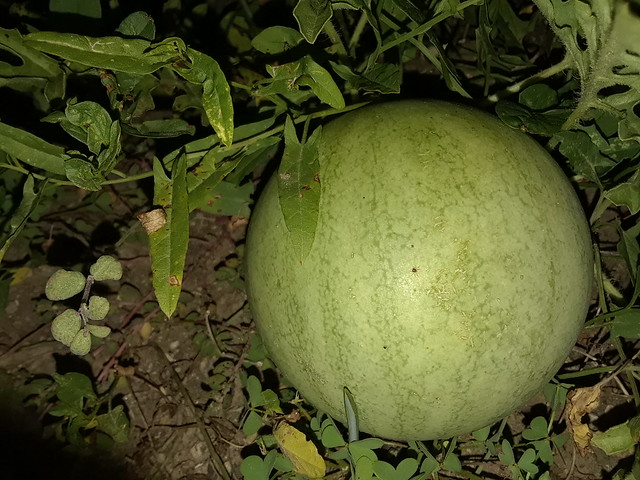 20180926_192332 20180926_192332 by Andrew Barney, on Flickr ------------------------------ A group photo of the ones i harvested today. 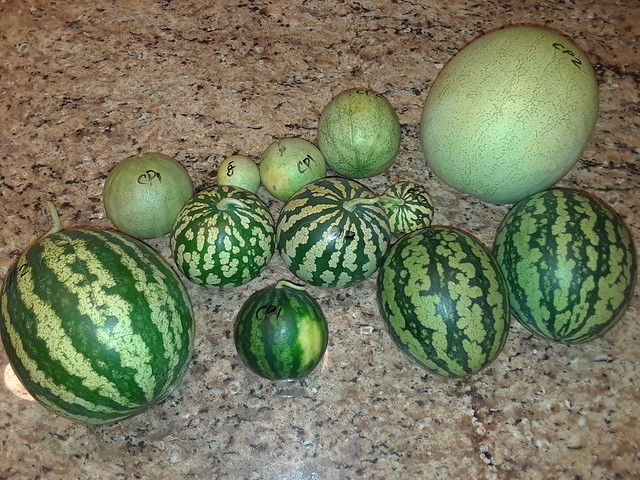 20180929_145441 20180929_145441 by Andrew Barney, on Flickr One of the largest ones from today. Second largest after the light rind one.  20180929_171741 20180929_171741 by Andrew Barney, on Flickr It was interesting because as expected it seems to be white flesh. But unexpectedly it has pure white seeds. The flesh was somewhat pectiny and hard but much easier to spoon out than a pure citron melon. I'm wondering if in citron time this one is far unripe. I am wondering if the seeds will develop color over time and not stay white. 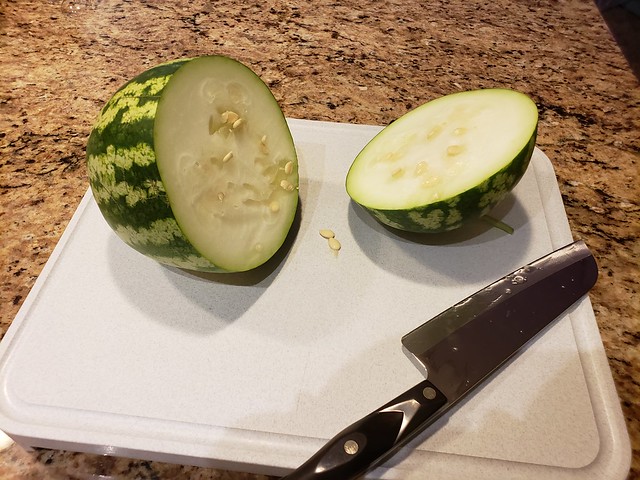 20180929_171829 20180929_171829 by Andrew Barney, on Flickr one of the ones that looked like maybe a kholodok melon. Sort of citron rind pattern, but sort of darker stripes between. 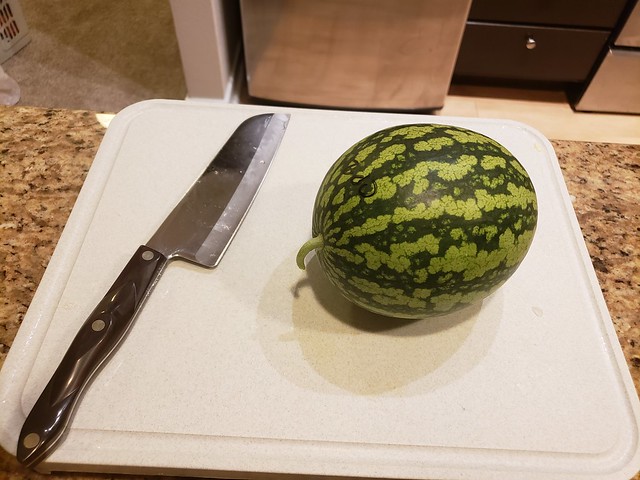 20180929_184225 20180929_184225 by Andrew Barney, on Flickr 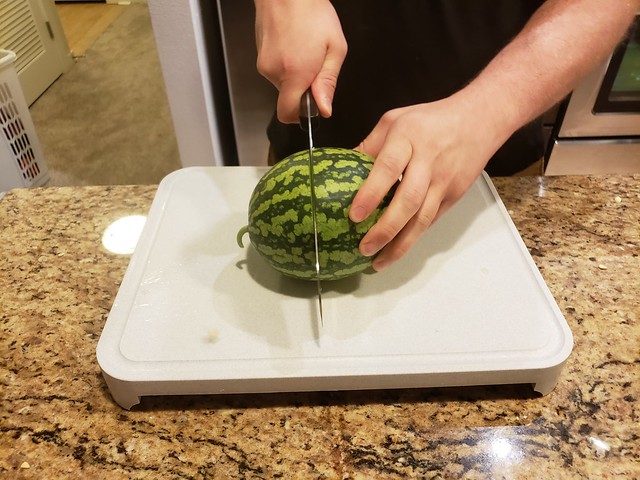 20180929_184232 20180929_184232 by Andrew Barney, on Flickr This one when cut open was even more interesting. Still think i should have let it ripen more, and in the world of citron time that makes sense, but not sure how much longer. Another month? The "winter watermelons" like Kholodok are said to increase is sweetness over time and can store for 3-5 months. But i think kholodok is a red flesh watermelon. So not sure what is going on, perhaps the citrons when very ripe have a little bit of yellow flesh, and one got crossed with a yellow fleshed domestic. Seeds also a little inmature, but tending to be small black seeds. a hint of more sweetness than the other one, but still way underipe and/or because it is a citron hybrid. 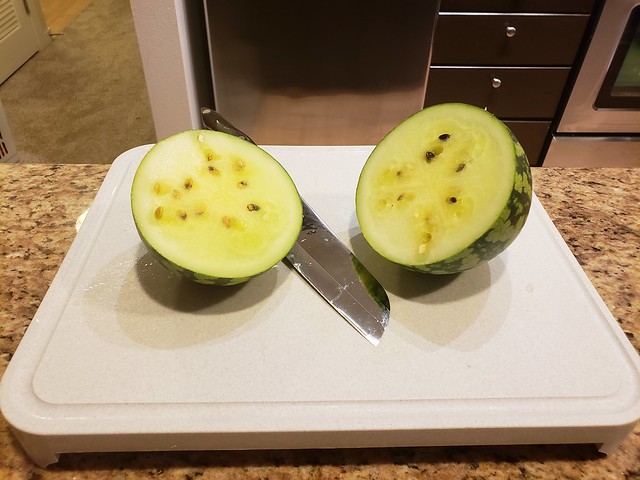 20180929_184251 20180929_184251 by Andrew Barney, on Flickr  20180929_190356 20180929_190356 by Andrew Barney, on Flickr |
|
|
|
Post by keen101 (Biolumo / Andrew B.) on Sept 30, 2018 1:05:00 GMT -5
F1s are expected to all have white flesh. F2s are expected to have mostly white flesh with some yellow and reds segregating out.  |
|
|
|
Post by keen101 (Biolumo / Andrew B.) on Oct 2, 2018 23:34:29 GMT -5
Okay grow report / taste test day two! Interesting results in this one! Okay first up, the tiny tiny golf ball sized melon. Some sort of domestic looking rind pattern. Greenish flesh and large black seeds. 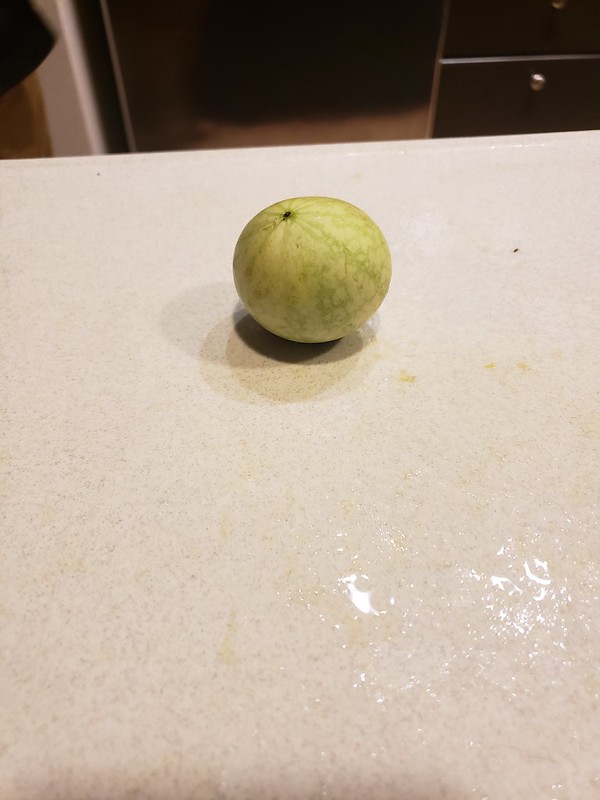 20180930_211922 20180930_211922 by Andrew Barney, on Flickr  20180930_211939 20180930_211939 by Andrew Barney, on Flickr Next, small citron-ish looking melon. Bright Red Seeds. Probably a full citron? I did add a few new citron seeds to the patch this year. Possible full citron, although the rind pattern is slightly different without the "cauliflower" stippling white stripes, but still identifiable from the yellow-ish stripes and overall look. 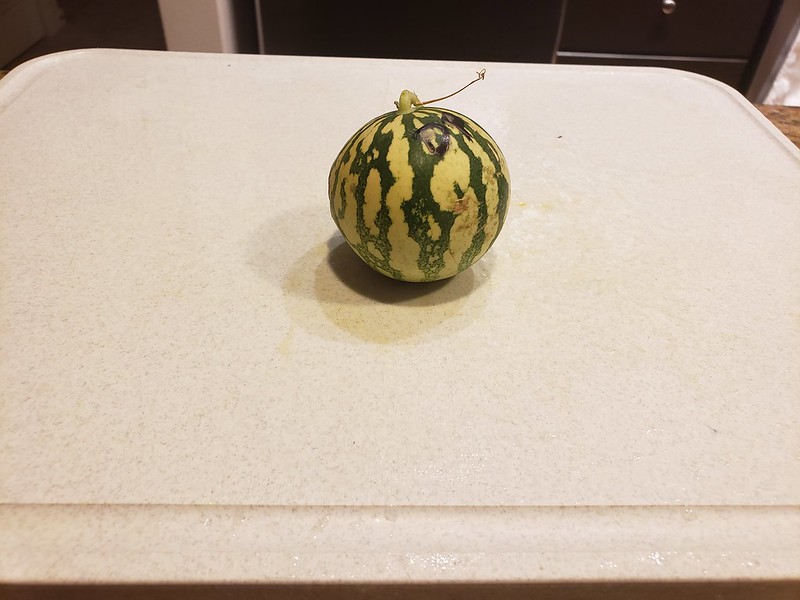 20180930_212021 20180930_212021 by Andrew Barney, on Flickr 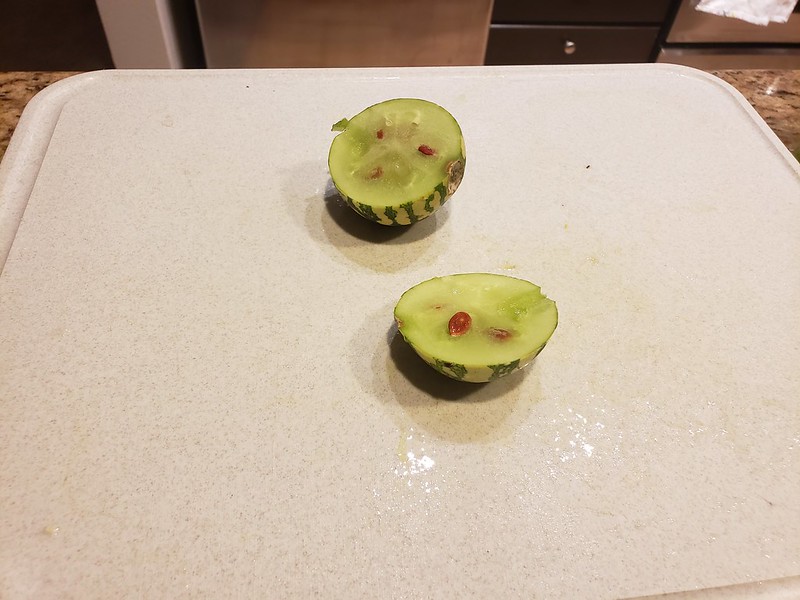 20180930_212035 20180930_212035 by Andrew Barney, on Flickr Next, Small little green, stripeless watermelon. Odd, but domestic pattern. This one was red inside and tasted sweet, but like a slightly overripe domestic watermelon followed by an odd after taste, almost bitter flavor. If actually bitter that is okay as that can be selected out once a recessive non-bitter melon can be found. Still interesting. Large Black seeds. 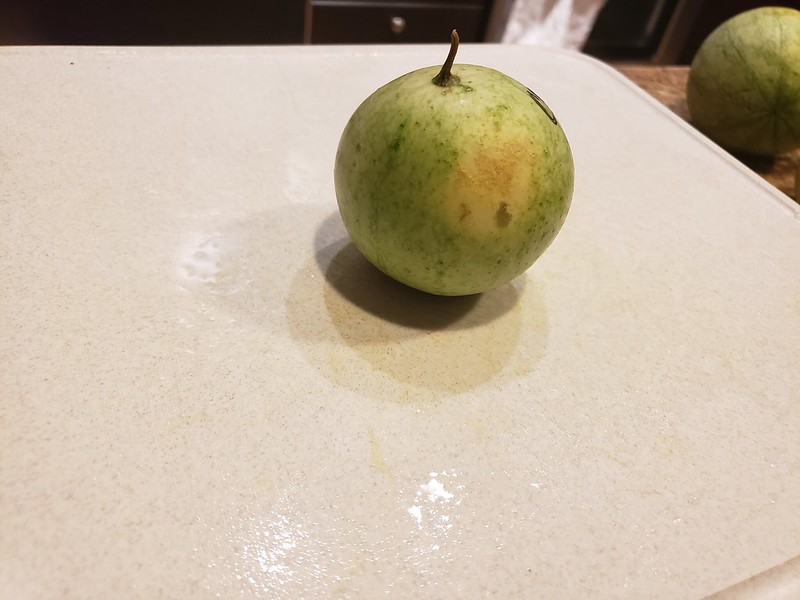 20180930_212118 20180930_212118 by Andrew Barney, on Flickr 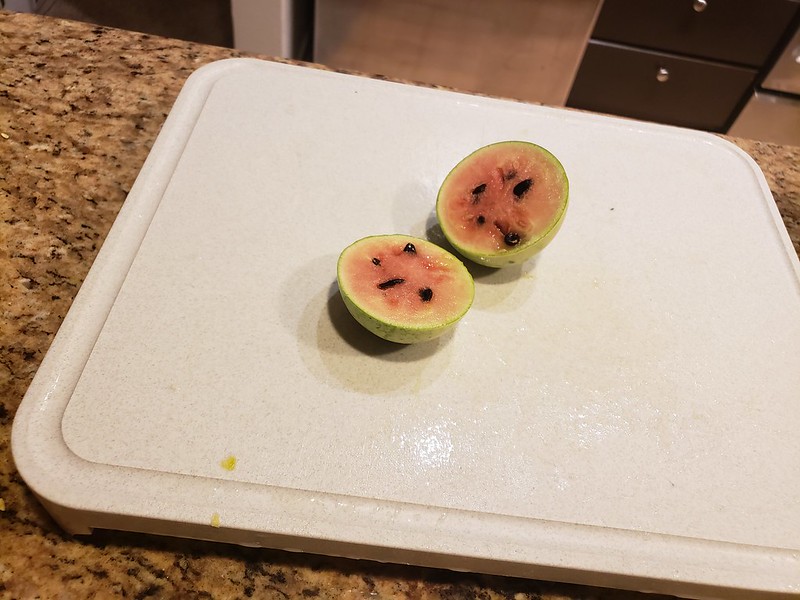 20180930_212132 20180930_212132 by Andrew Barney, on Flickr 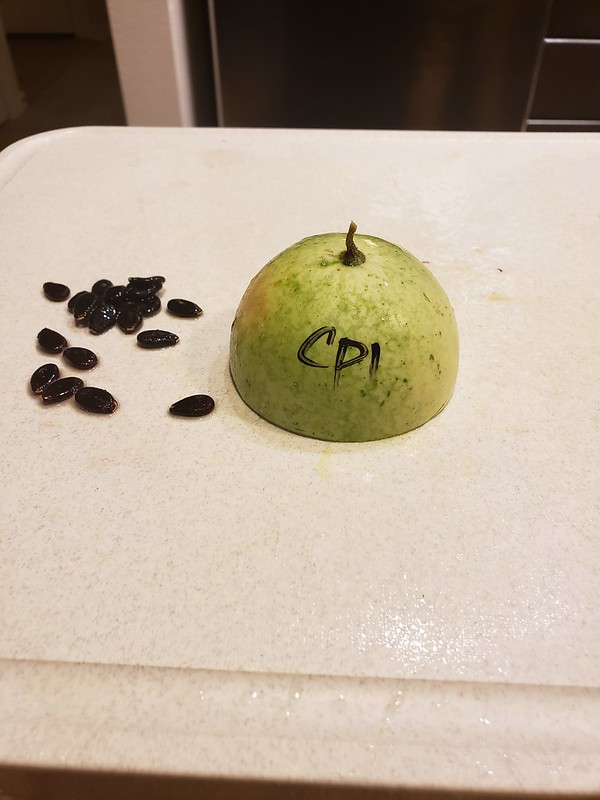 20180930_212329 20180930_212329 by Andrew Barney, on Flickr Next, The coolest melon so far! A very yellow fleshed watermelon with a domestic rind pattern (actually i think the pattern of the best yellow fleshed from garden last year actually! and a pattern i like). This melon was very watery and had a hint of sweetness but almost no sweetness at all and was overshadowed by just water. A good survival melon. lol. This melon had a hint of that weird after-flavor or bitterness too but it was nowhere near the red watermelon above and was negligible. We ate the whole melon despite these lackings so obviously not that bad. It had an almost lemony flavor. Interesting to say the least. The most interesting trait of this watermelon was that it had NO white part of the rind! I can't remember the name of the white part (pith?). Anyway it was amazing! you could literally eat right to the edge of the peel! Now that is a trait and a line worth investigating again! Small reddish-brown stippled patterned seeds. Cool! 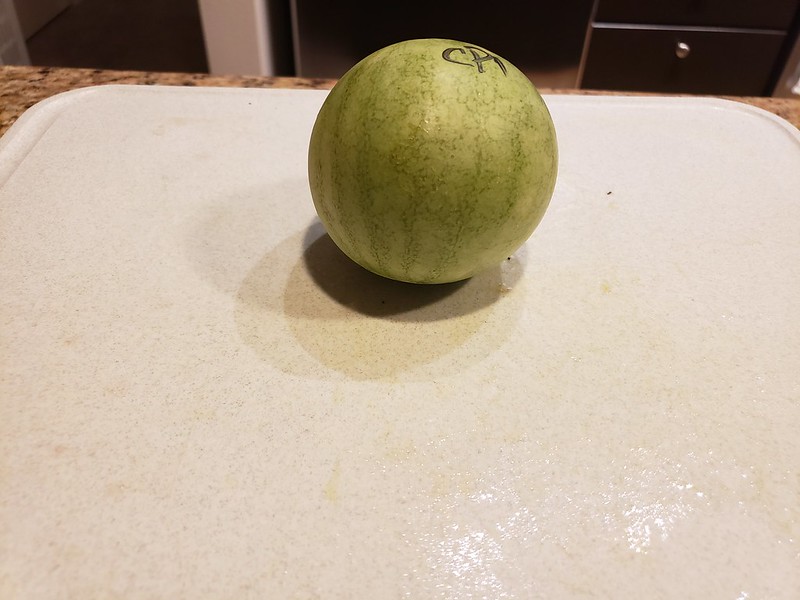 20180930_212445 20180930_212445 by Andrew Barney, on Flickr 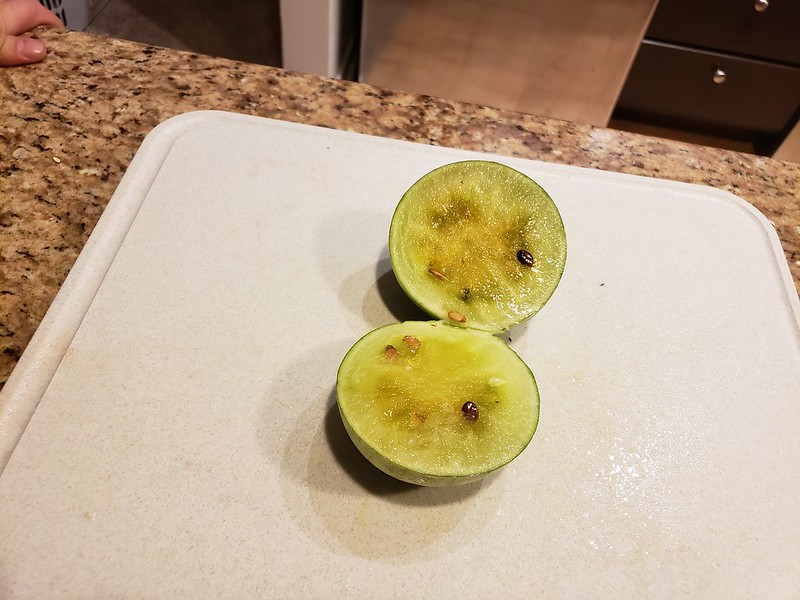 20180930_212457 20180930_212457 by Andrew Barney, on Flickr 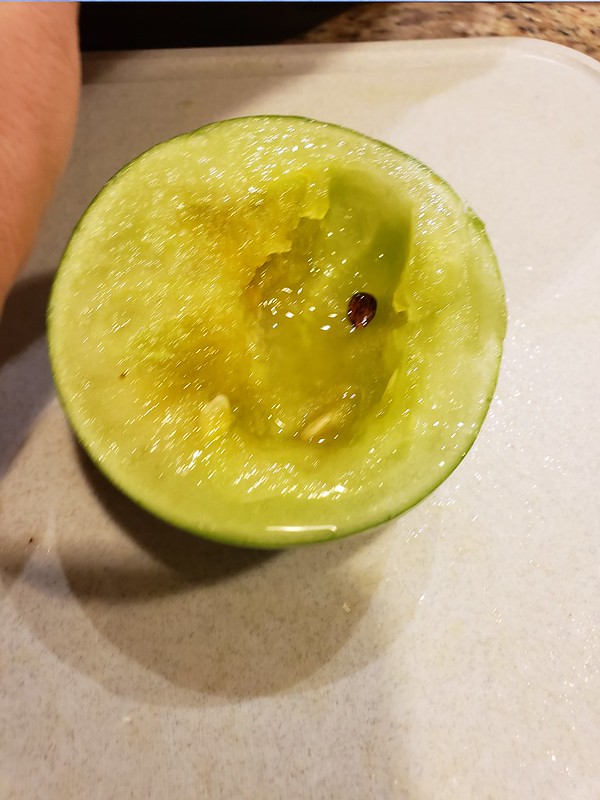 20180930_212650 20180930_212650 by Andrew Barney, on Flickr 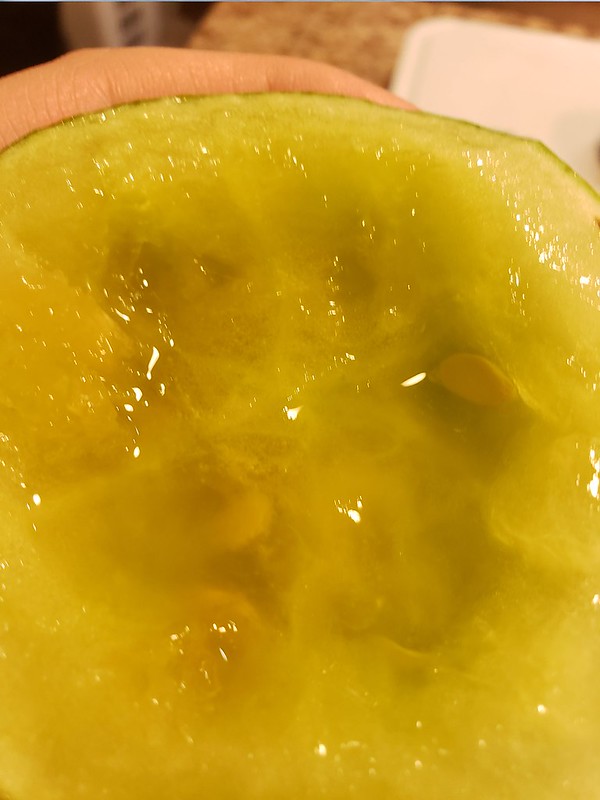 20180930_212656 20180930_212656 by Andrew Barney, on Flickr 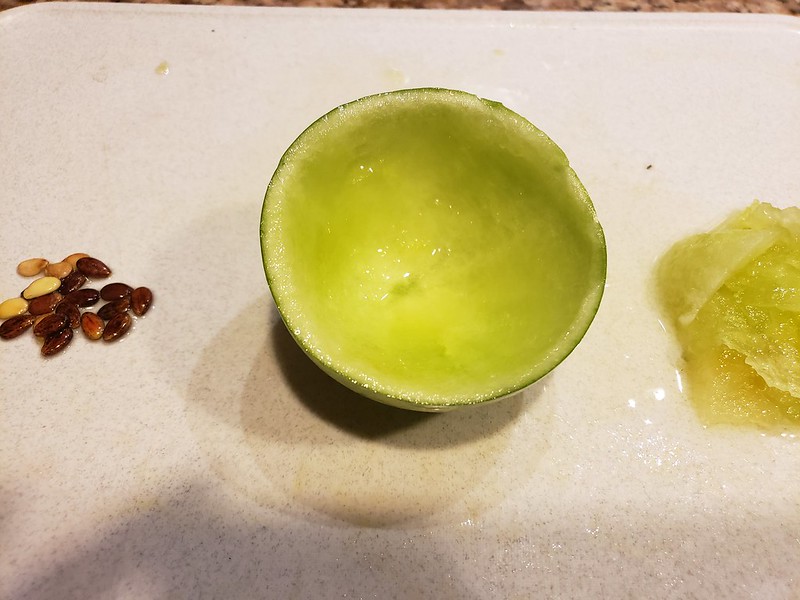 20180930_212918 20180930_212918 by Andrew Barney, on Flickr next, little green one. dark domestic rind pattern. white, slight yellow. Firm. Probably under ripe because of late citron ripening genes. 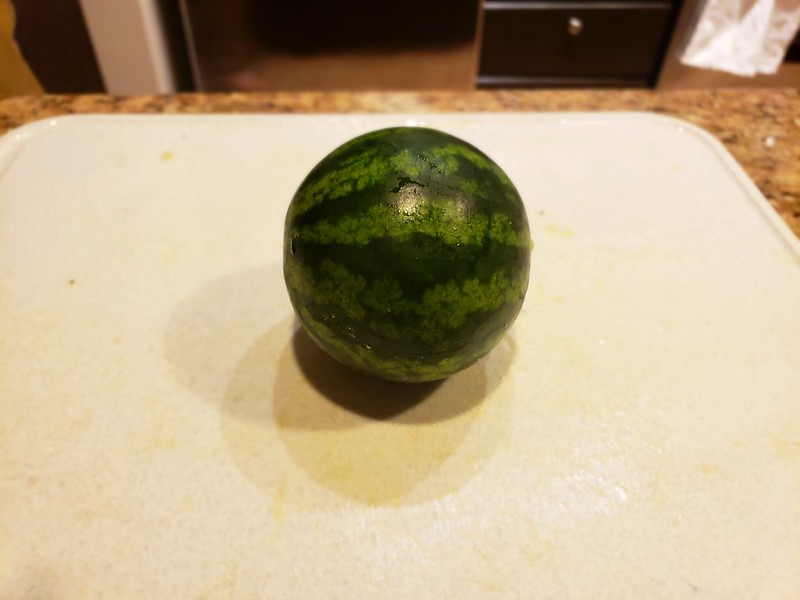 20180930_213232 20180930_213232 by Andrew Barney, on Flickr 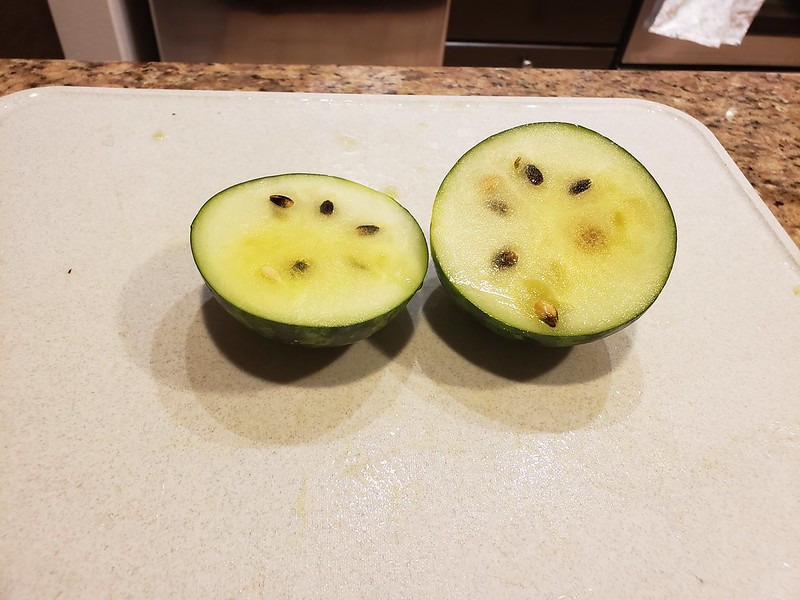 20180930_213303 20180930_213303 by Andrew Barney, on Flickr next, little bigger light green melon. domestic pattern. white, slight yellow. Firm. Probably under ripe because of late citron ripening genes. 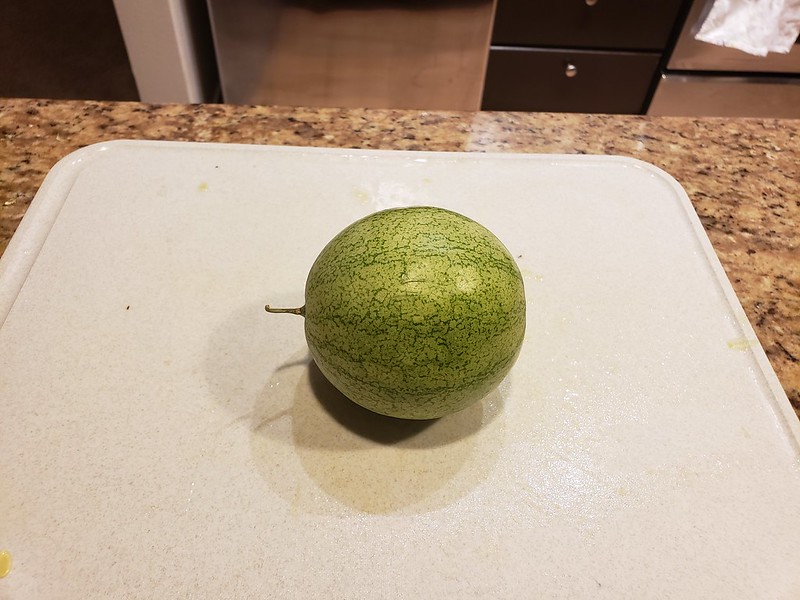 20180930_213453 20180930_213453 by Andrew Barney, on Flickr 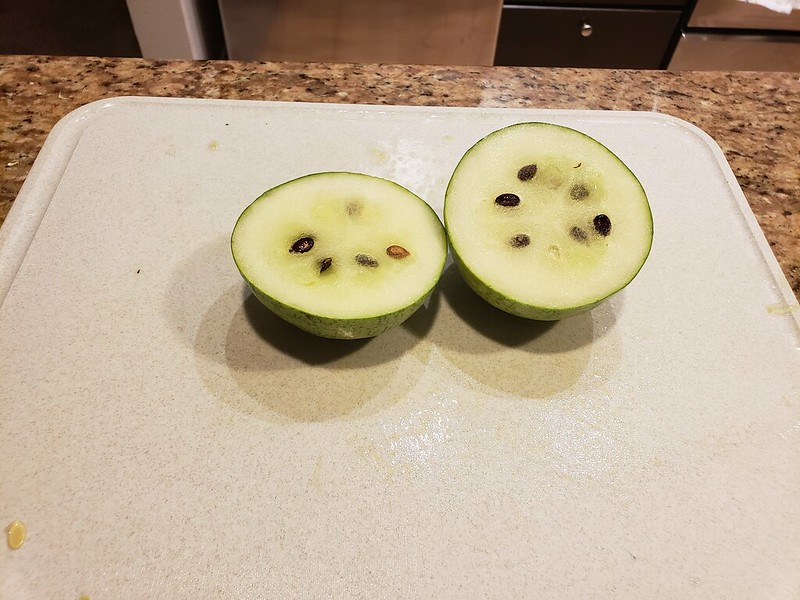 20180930_213511 20180930_213511 by Andrew Barney, on Flickr Next, medium round full citron looking fruit. From the Domestic patch. Has characteristic citron pattern with white stippled cloverleaf or cauliflower pattern with dark green stripes and characteristic yellowish tint starting on top of melon. I think it has the golden rind gene in some form as i think the longer these are kept the more yellow they become as they get more and more ripe. This one had white seeds and VERY firm white flesh. Waiting to see if seeds change color (if they do this one was very under ripe). 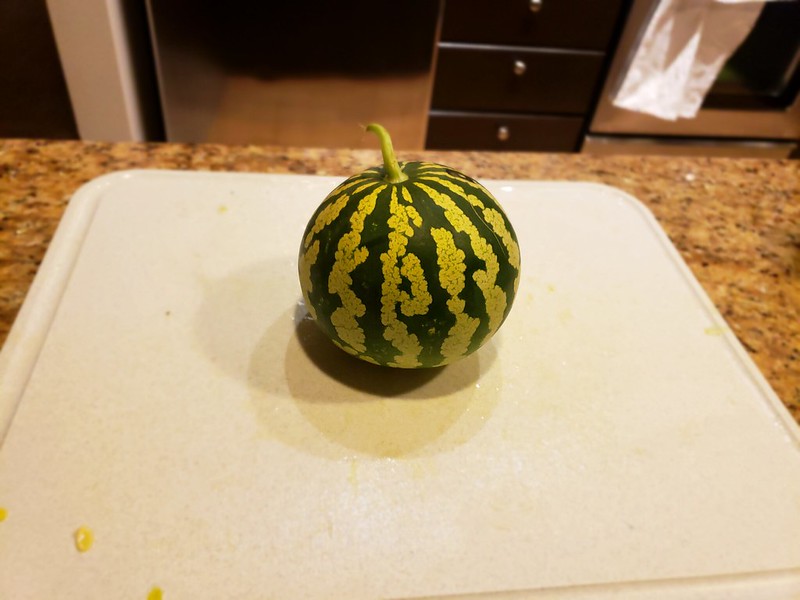 20180930_213639 20180930_213639 by Andrew Barney, on Flickr 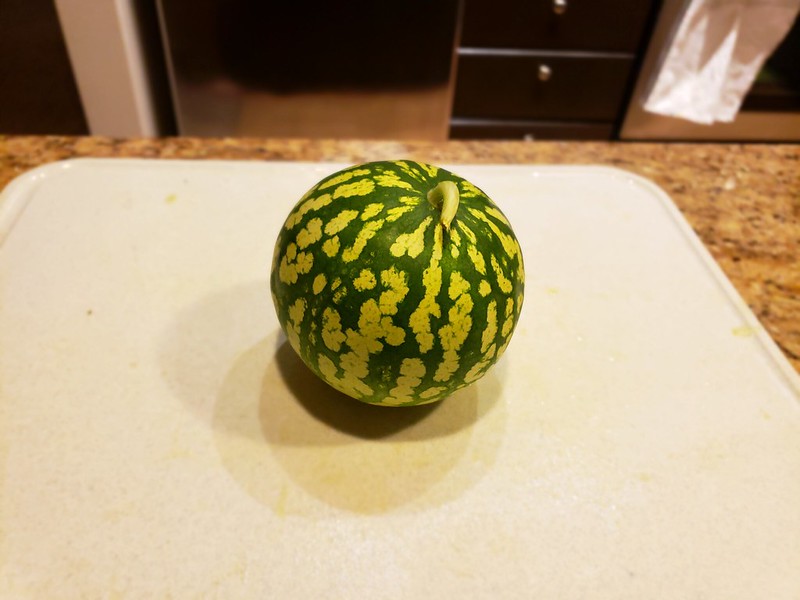 20180930_213743 20180930_213743 by Andrew Barney, on Flickr 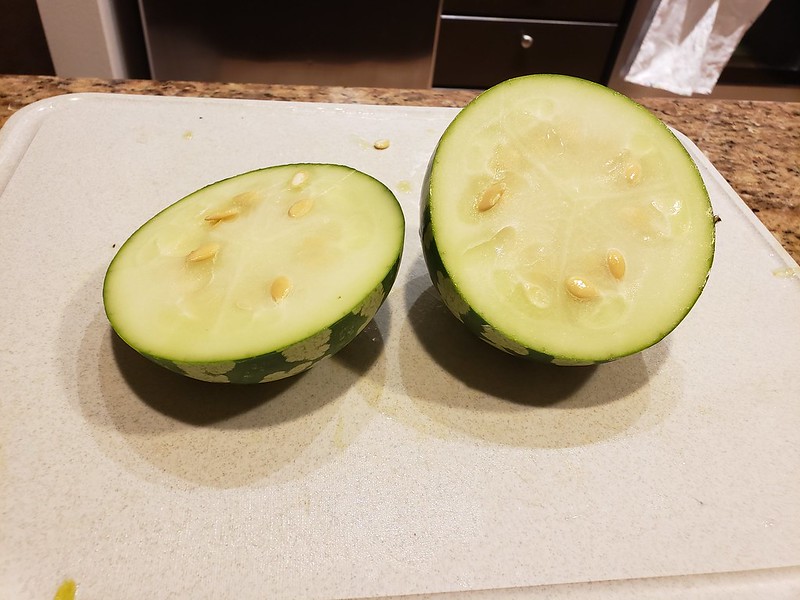 20180930_213705 20180930_213705 by Andrew Barney, on Flickr |
|
|
|
Post by gilbert on Oct 3, 2018 17:17:59 GMT -5
Those are some pretty interesting looking melons!
|
|
|
|
Post by keen101 (Biolumo / Andrew B.) on Oct 4, 2018 7:17:55 GMT -5
|
|
|
|
Post by keen101 (Biolumo / Andrew B.) on Oct 8, 2018 22:04:29 GMT -5
Okay, Taste Test day three. First the largest domestic watermelon from the domestic watermelon patch. This one was a perfectly ripe red watermelon (using the "three tendril-method") with excellent flavor and small black seeds. Excellent!  20181008_182723 20181008_182723 by Andrew Barney, on Flickr  20181008_182816 20181008_182816 by Andrew Barney, on Flickr 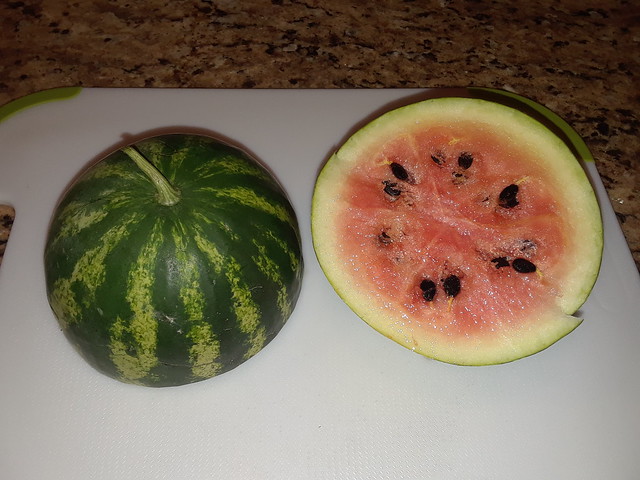 20181008_182843 20181008_182843 by Andrew Barney, on Flickr 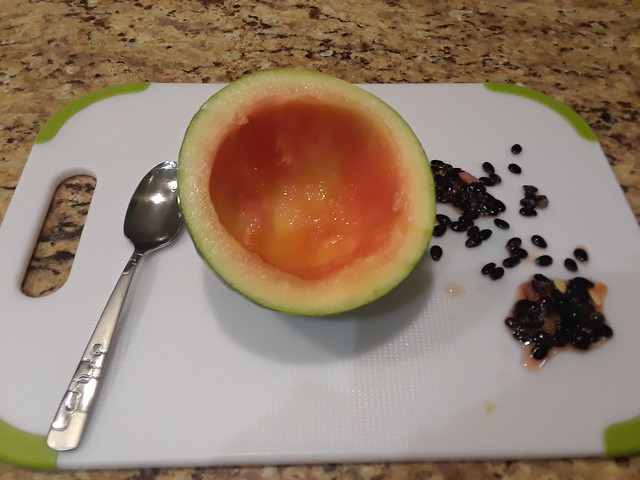 20181008_183446 20181008_183446 by Andrew Barney, on Flickr ------------------------ Okay, on to the presumed F2 citron hybrids and ([citron x watermelon] x watermelon) back-crosses. --- Bland white flesh with large brown mottled seeds. Citron-ish rind pattern. 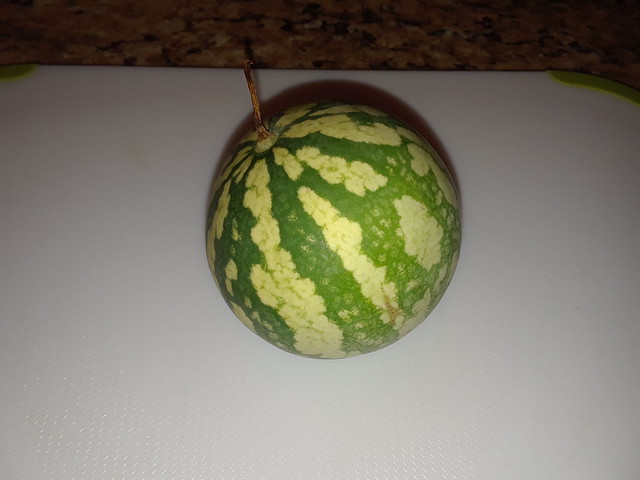 20181008_182036 20181008_182036 by Andrew Barney, on Flickr 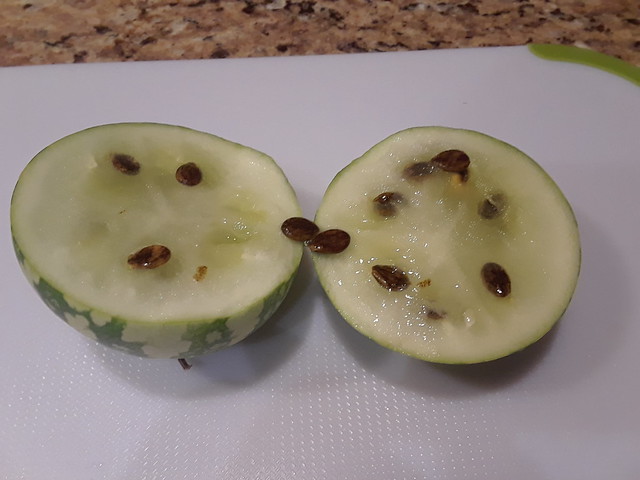 20181008_182314 20181008_182314 by Andrew Barney, on Flickr --- A few random tiny melons. White flesh with light translucent green to whiteish to light light yellowish. bland. but mature seeds. 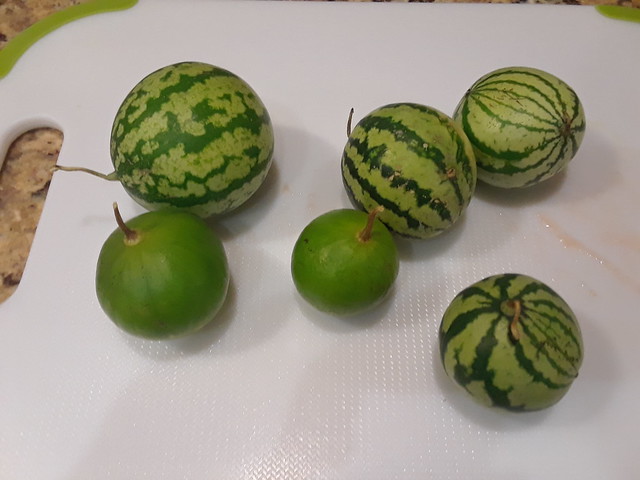 20181008_183731 20181008_183731 by Andrew Barney, on Flickr 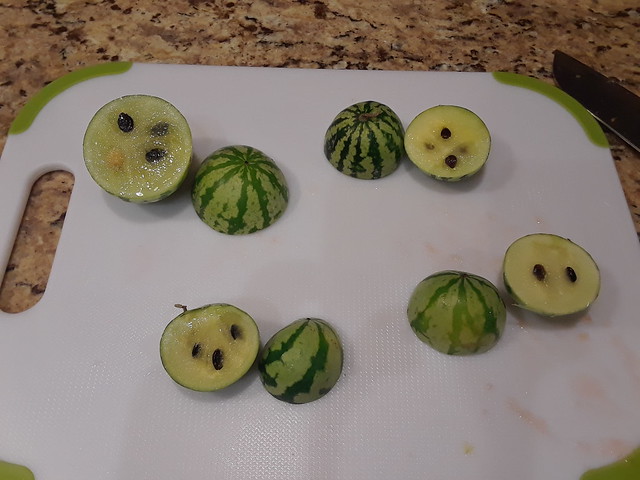 20181008_183924 20181008_183924 by Andrew Barney, on Flickr --- three small melons. The one on the far left had large black seeds and bland flesh. The one in the middle must have been a pure citron and i did not taste it, but bright red seeds are presumed to be new F1 seeds or some combination back-cross. I now believe that the seeds do not change color the first year even when crossed. The melon on the far right had bright yellow flesh and tasted VERY sweet with good domestic yellow watermelon flavor and then had some of that weird slightly bitter after taste. The weird after taste is a little off putting, but a line worth working with to find a non-bitter recombinant non-the-less. 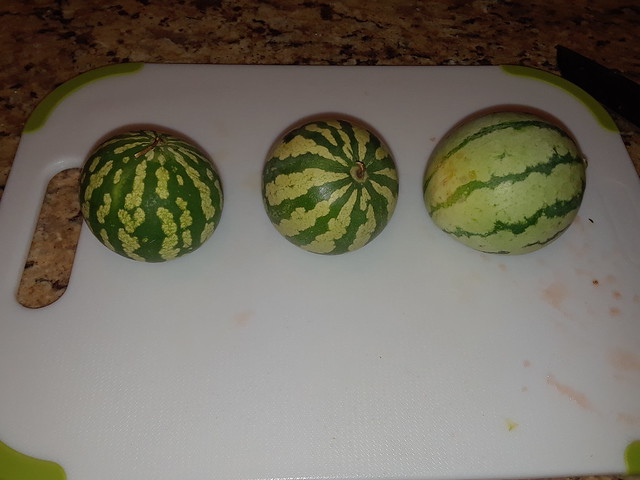 20181008_184006 20181008_184006 by Andrew Barney, on Flickr 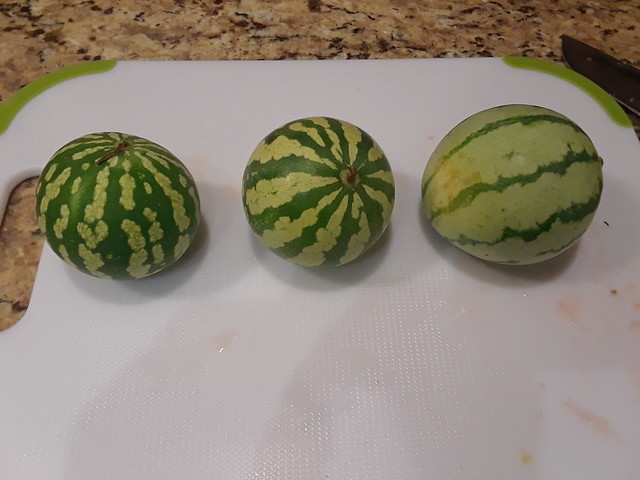 20181008_184010 20181008_184010 by Andrew Barney, on Flickr  20181008_184124 20181008_184124 by Andrew Barney, on Flickr  20181008_184130 20181008_184130 by Andrew Barney, on Flickr --- white. bland. citron rind pattern not very apparent, but flesh is more citron-like. 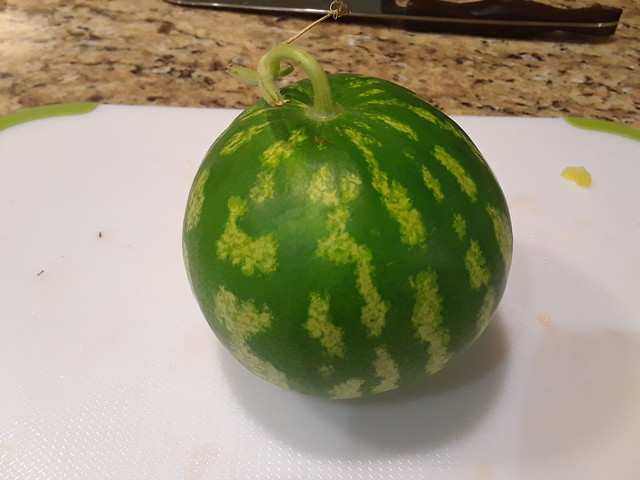 20181008_193503 20181008_193503 by Andrew Barney, on Flickr 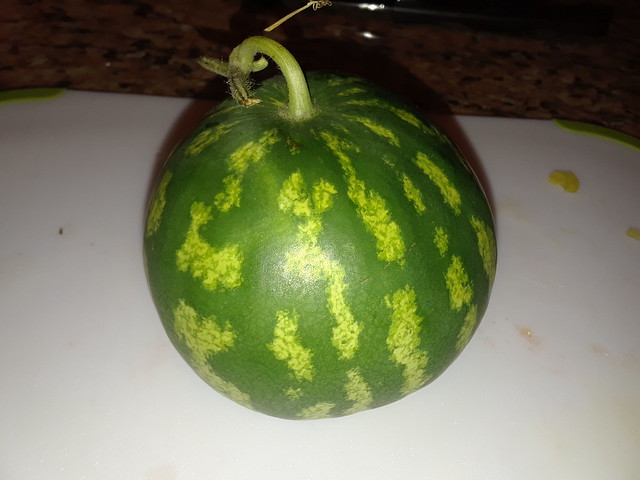 20181008_193459 20181008_193459 by Andrew Barney, on Flickr 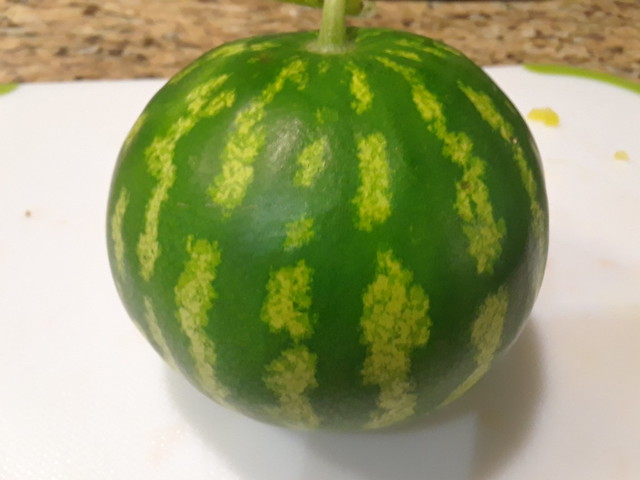 20181008_193515 20181008_193515 by Andrew Barney, on Flickr 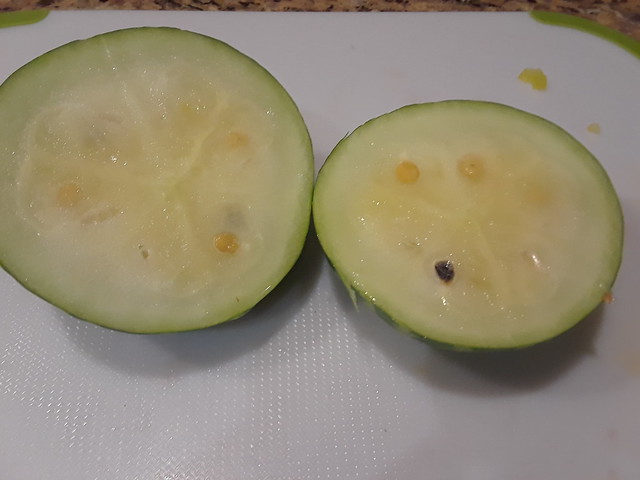 20181008_193529 20181008_193529 by Andrew Barney, on Flickr --- Three domestic looking rinds. The one on the far left was flavor-less, but had sugar. Tasted like "sugar-water". No bitter compounds. The other two were some sort of orange or salmon-yellow-ish with the characteristic mealy or "frothy" texture and bad flavor i do not like. These did not have bitter compounds, but taste terrible to me. I threw these seeds away. Those two are genetic dead-ends in my eyes. 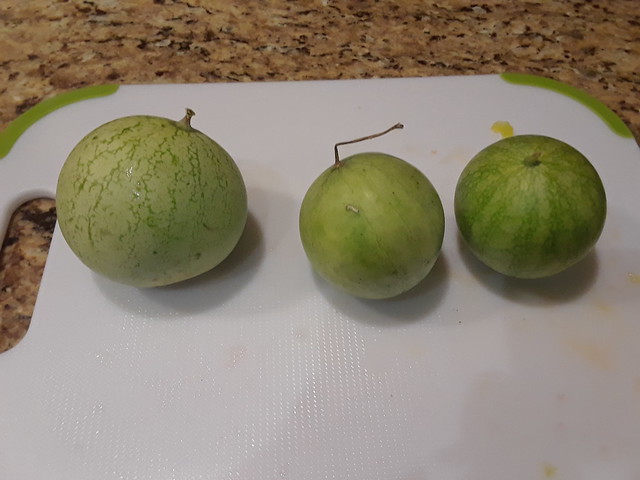 20181008_193612 20181008_193612 by Andrew Barney, on Flickr 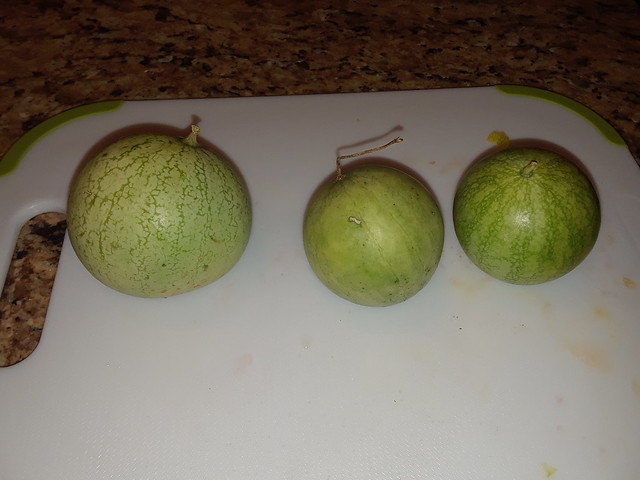 20181008_193617 20181008_193617 by Andrew Barney, on Flickr 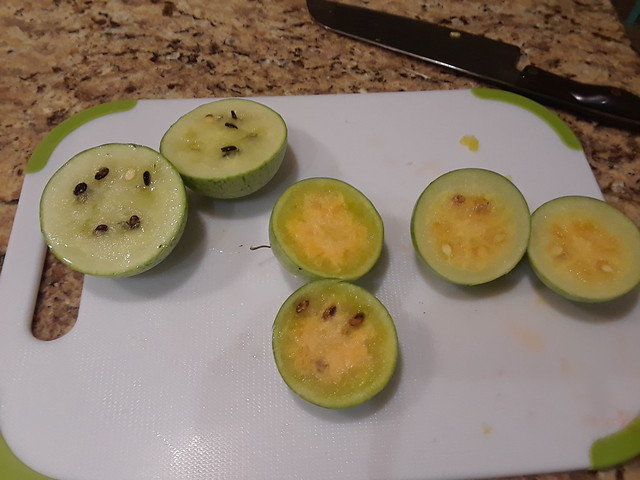 20181008_193702 20181008_193702 by Andrew Barney, on Flickr |
|
|
|
Post by atilgan on Oct 12, 2018 12:52:15 GMT -5
erased
|
|
|
|
Post by keen101 (Biolumo / Andrew B.) on Oct 13, 2018 12:25:51 GMT -5
Oh wow! That Sounds very cool! I will have to try and buy some seeds for that! Interestingly enough i was just thinking about what a yellow fleshed watermelon with red seeds would look like. I also was thinking about what a red fleshed with green seeds would look like.
I'm about to publish photos of my last and final citron and watermelon harvest from this year. I decided to cut into all of them. I got some even more interesting results. One of them had green seeds despite not ever seeing that trait before. I knew it was possible as there used to be a green seeded citron melon out there, and also because green seeds is supposedly dominant over red seeds but recessive to black and mottled colors.
I will publish in a few hours hopefully, so stay tuned.
|
|